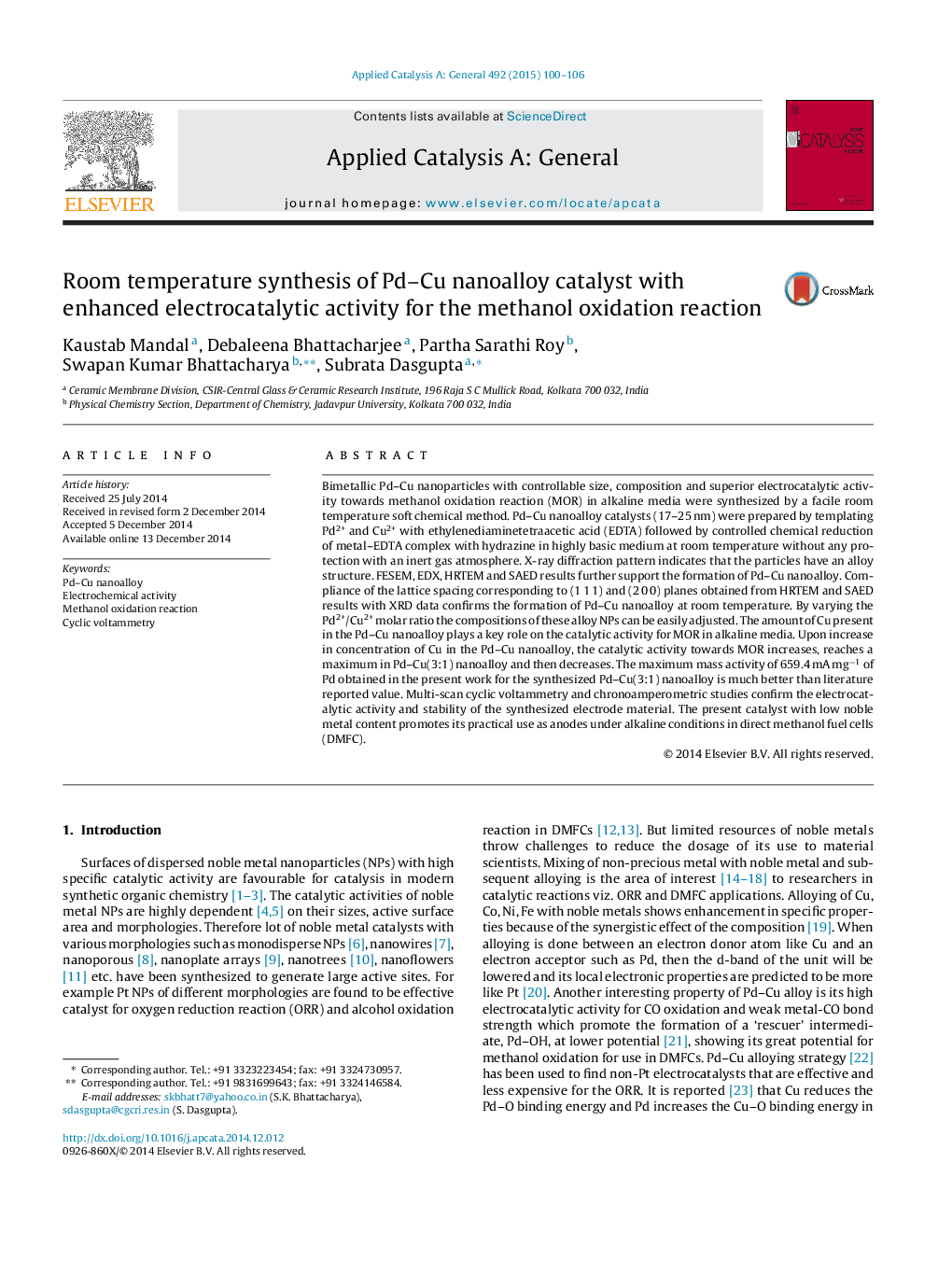| کد مقاله | کد نشریه | سال انتشار | مقاله انگلیسی | نسخه تمام متن |
|---|---|---|---|---|
| 39219 | 45813 | 2015 | 7 صفحه PDF | دانلود رایگان |
• First report of making of Pd–Cu nanoalloy at room temperature.
• Pd–Cu(3:1) gives improved electrocatalytic activity in MOR.
• 93% of peak current density is retained in 100th cycle.
• Degradation of membrane due to CO poisoning in DMFC's will be minimized.
Bimetallic Pd–Cu nanoparticles with controllable size, composition and superior electrocatalytic activity towards methanol oxidation reaction (MOR) in alkaline media were synthesized by a facile room temperature soft chemical method. Pd–Cu nanoalloy catalysts (17–25 nm) were prepared by templating Pd2+ and Cu2+ with ethylenediaminetetraacetic acid (EDTA) followed by controlled chemical reduction of metal–EDTA complex with hydrazine in highly basic medium at room temperature without any protection with an inert gas atmosphere. X-ray diffraction pattern indicates that the particles have an alloy structure. FESEM, EDX, HRTEM and SAED results further support the formation of Pd–Cu nanoalloy. Compliance of the lattice spacing corresponding to (1 1 1) and (2 0 0) planes obtained from HRTEM and SAED results with XRD data confirms the formation of Pd–Cu nanoalloy at room temperature. By varying the Pd2+/Cu2+ molar ratio the compositions of these alloy NPs can be easily adjusted. The amount of Cu present in the Pd–Cu nanoalloy plays a key role on the catalytic activity for MOR in alkaline media. Upon increase in concentration of Cu in the Pd–Cu nanoalloy, the catalytic activity towards MOR increases, reaches a maximum in Pd–Cu(3:1) nanoalloy and then decreases. The maximum mass activity of 659.4 mA mg−1 of Pd obtained in the present work for the synthesized Pd–Cu(3:1) nanoalloy is much better than literature reported value. Multi-scan cyclic voltammetry and chronoamperometric studies confirm the electrocatalytic activity and stability of the synthesized electrode material. The present catalyst with low noble metal content promotes its practical use as anodes under alkaline conditions in direct methanol fuel cells (DMFC).
Pd–Cu nanoalloy catalysts of tailor made composition have been synthesized first time at room temperature. The highest electro-catalytic activity towards methanol oxidation is found for the Pd–Cu alloy containing 25 atom% of Cu.Figure optionsDownload high-quality image (147 K)Download as PowerPoint slide
Journal: Applied Catalysis A: General - Volume 492, 25 February 2015, Pages 100–106
